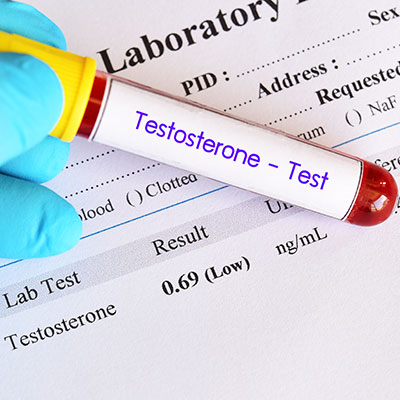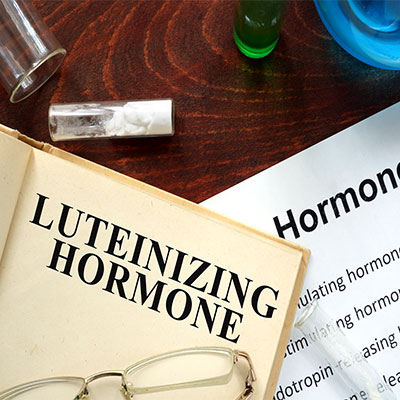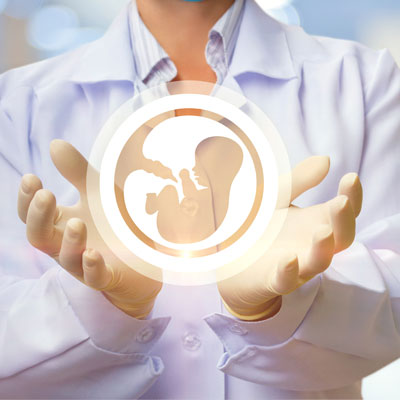Low Testosterone or Testosterone Deficiency (Hypogonadism)
Contents
Low testosterone is a medical condition, also known as “hypogonadism,” that is caused by a testosterone deficiency.
Testosterone is the most important male hormone. It affects everything in men, from sperm production to libido.
Testosterone deficiency is when your body is not producing enough testosterone. Testosterone deficiency, also known as “hypogonadism,” can happen at any stage of life, particularly when it develops from injury, infection, or some other disease condition.
However, testosterone deficiency is more prevalent among men and women over 40. This is because the most common cause of testosterone deficiency is the steady decline in testosterone that occurs as men and women age. Doctors refer to this condition as an “age-related testosterone deficiency.”
What Is Testosterone Deficiency?
Testosterone is a critical hormone for both men and women. Testosterone is generally recognized as a “male hormone.” It controls all of the physical features we associate with “maleness” – larger muscles, facial hair, deeper voice, etc. However, women make and need testosterone, too but in much smaller amounts than in men.
In both men and women, testosterone is a very critical hormone for your overall health and vitality. Testosterone influences your ability to build muscle. It strengthens your bones, regulates your ability to burn fat, and is critical to sexual arousal and function in both men and women.
Testosterone Deficiency Syndrome, also known as “Hypogonadism,” is a condition in which your body does not produce sufficient testosterone. The conditions may simply be referred to as having a “testosterone deficiency” or “low testosterone.”
How Common Is Testosterone Deficiency?
Men are more likely to develop testosterone deficiency as they get older. According to the Journal of the American Medical Association, testosterone deficiency is common, affecting approximately 7% of men in their 50s, and increases with age.
It is also more common in men who are overweight and men who are in poor general health with long-term health conditions.
One large study in Europe found that testosterone deficiency affected about 2 in 100 men aged 40 to 79 years. Testosterone deficiency affected about 5 in 100 men aged 70 to 79 years.
A testosterone deficiency occurs when, for whatever reason, your body is not making enough testosterone.
Causes of Testosterone Deficiency

However, the most common cause of a testosterone deficiency is simply the natural drop in testosterone levels as you age.
A testosterone deficiency can be caused by an inherited (congenital) trait or something that happens later in life (acquired), such as an injury or an infection.
Several factors can contribute to an acquired testosterone deficiency. Not getting enough exercise, doing the wrong kinds of exercise, a poor diet, and metabolic conditions such as diabetes can lead to low testosterone. However, the most likely cause of testosterone deficiency is the normal drop in testosterone levels that occur as you age.
While there can be many reasons for testosterone deficiency, the condition primarily affects older men. This is because once a man is over 30, the level of testosterone in his blood starts to drop significantly. This type of age-related testosterone deficiency in men is similar to menopause in women. It is, therefore, sometimes referred to as “andropause.”
However, unlike menopause, which happens at a specific time in a woman’s life, andropause in men develops more slowly over time. Once a man is over 40, his testosterone level will drop by as much as 2% per year. By age 70, the average man’s testosterone production is about half of what it was in his 20s.
Testosterone levels are measured in nanograms per deciliter (ng/dL). Typically, the normal range is 300 to 1,000 ng/dL. Anything below 300 ng/dL is considered low testosterone.
Doctors who treat low testosterone recognize two types of testosterone deficiencies: primary and secondary testosterone deficiency. Often primary and secondary testosterone deficiency occur together.
Primary Testosterone Deficiency
When you have a primary testosterone deficiency, that means that you don’t have enough testosterone due to a problem in the organs that make testosterone. In men, that is the testes, and in women, that is the ovaries or the adrenal glands. In a primary testosterone deficiency, the source of testosterone production in your body is still receiving the message from the brain to produce testosterone, but the organs are unable to produce the hormone.
Secondary Testosterone Deficiency
In a secondary testosterone deficiency, there is a problem in the areas of the brain that signal the sex organs to make or release testosterone. This type of testosterone deficiency means that you have a problem in the hypothalamus or the pituitary gland — the parts of the brain that tell the testicles to produce testosterone.
The hypothalamus produces gonadotropin-releasing hormone, which signals the pituitary gland to make follicle-stimulating hormone (FSH) and luteinizing hormone (LH). Luteinizing hormone then signals the testes to produce testosterone.
Testosterone deficiencies can be primary or secondary.
Testing for Testosterone Deficiency

Any doctor can perform a blood test for low testosterone. However, if you suspect that you have a testosterone deficiency, it is best to be tested by a doctor who specializes in age-related hormone imbalances in men and women.
Your tests will be used to determine your testosterone level. In general, the normal range in males is about 270-1070 ng/dL with an average level of 679 ng/dL. In most men, testosterone levels continue to rise from childhood through adolescence. Testosterone levels peak at about age 20, and then it slowly declines.
There is no special preparation needed for the test doctors use to see if you qualify for testosterone replacement therapy. Doctors usually do prefer to draw your blood sample in the morning.
Testosterone Deficiency Treatment
If you are diagnosed with a testosterone deficiency, the only effective treatment is testosterone replacement therapy. Testosterone replacement therapy raises the body’s testosterone levels through regular administration of testosterone. Testosterone therapy is only available with a doctor’s prescription.
Testosterone replacement therapy can be given in a number of forms, such as creams, topical gels, skin patches, subdermal pellets, or injections. Our doctors have found that intramuscular testosterone injections to be the most effective form of testosterone replacement. Testosterone injections are usually prescribed for a period of six months.
After your first six months of testosterone replacement, you will be evaluated to determine if continued therapy is needed.
What Can I Expect After Treatment for Testosterone Deficiency?
Studies have shown that testosterone replacement therapy provides a wide range of benefits for men and women with testosterone deficiencies. Such benefits include improved libido, mood, cognition, muscle mass, bone density, and red blood cell production. Some of the other benefits of testosterone replacement include:
- Increased energy and vitality
- Increased ability to build lean muscle
- Weight loss, particularly stubborn belly fat
- Improved ability to focus and other cognitive improvements
- Increased strength
- Improve sleep
- Healthier skin, hair, and nails
- Stronger bones
In addition, testosterone replacement therapy may reduce the risk of diabetes and some cancers, as well as lower your risk of stroke or heart attack.
You will not experience all of these results of testosterone therapy overnight. It takes time for testosterone injections to reverse all eliminate the symptoms of age-related testosterone deficiency. Your prescription for testosterone therapy will be designed for your body to react to the increases in testosterone slowly over time. The life-changing results of testosterone therapy will impact four major areas of your life:
- Physical strength
- Sexual performance
- Mental acuity
- Emotional wellbeing
Your results of testosterone therapy will benefit you in each of these areas of life.
Since testosterone therapy is prescribed on a very individualized basis, results will vary. However, many patients say they start to see improvements in strength and energy in as little as two weeks of being on testosterone replacement.
Testosterone deficiency, or low testosterone, can be effectively treated with testosterone replacement therapy.
Now that you know a bit more about low testosterone and testosterone deficiencies, why not contact us today and learn about the many life-changing benefits that can be achieved with testosterone replacement therapy.
FAQ
How Do I Find a Doctor to Prescribe Me Testosterone?
Any doctor can write you’re a prescription for testosterone. However, you should not get your prescription for testosterone therapy from just any doctor. You should use a doctor like ours, who specializes in treating men with age-related testosterone deficiency. You can get a prescription from us for testosterone by following these five simple steps.
- Step 1 – Fill out an online medical history form – This first step is indeed the only step in the process of getting a prescription for testosterone injections that can be done online.
- Step 2 - See a doctor –If your online medical history form indicates that you are a good candidate for testosterone therapy, the next step is to see your doctor. He or she will discuss your medical history in further detail, ask you more about your symptoms, and take a complete physical exam.
- Step 3 – Laboratory hormone testing – Once you have completed your physical exam, you will be referred to a laboratory to have the testosterone hormone levels in your blood tested.
- Step 4 – You will obtain a prescription for a program of testosterone injections - If the results of your laboratory tests show that you have a testosterone deficiency and are suffering from low testosterone, your doctor will prescribe a dosage of testosterone therapy to suit your needs and lifestyle.
- Step 5 – Your testosterone will be delivered to you – Your prescription for testosterone therapy will be forwarded to one of the pharmacies we work with that specializes in filling prescriptions for testosterone injections. The pharmacy will then deliver your testosterone therapy supplies to you.
How Would a Man Feel if His Testosterone Level Was Low?
If you are a man between the ages of 40 and 65 and are:
- Feeling more tired than usual
- Putting on weight and having trouble taking it off
- Finding it difficult to focus or concentrate at work
- Having some memory issues and sleep problems
- Having some “trouble in the bedroom” such as erectile dysfunction
Then there is a good possibility that you are suffering from low testosterone and are a man who qualifies for testosterone therapy
How Bad Is a Testosterone Level of 8.3?
A testosterone level of 8.3 definitely indicates a high degree of testosterone deficiency. That is a very low testosterone level, almost that of a man that has been castrated and has little or no ability to produce testosterone at all. Even women have a higher level of testosterone than 8.3. Testosterone levels are measured in nanograms per deciliter (ng/dl). The normal range for adult males is about 200 to 950 ng/dl. For women, it is about 8 – 60. At any age, a level of 8.3 in a male is an extremely low testosterone level, and medical attention should be sought.
What is a Testosterone Deficiency?
Testosterone Deficiency Syndrome, also known as “Hypogonadism,” is a condition in which your body does not produce sufficient testosterone. The conditions may simply be referred to as having a “testosterone deficiency” or “low testosterone.”
What Causes Low Testosterone?
There can be several causes of low testosterone, from genetics to any disease or injury that impacts the testes. However, the most common cause of low testosterone is the age-related testosterone deficiency that occurs as all men age.
Testosterone is vital throughout a man’s life. In fact, testosterone production and release begin in the womb, and it is what starts to differentiate a male fetus from a female fetus. Testosterone production continues through adolescence until it reaches its highest level at about the age of eighteen. In most men, their testosterone levels will stay at or pretty close to that maximum level through their 20s. Then, once you are over 30, your testosterone level will start on a steady downward slope. By the time you are over 40, most men will be feeling the negative impacts of low testosterone.
What Questions to Ask Your Doctor About Low Testosterone?
If your doctor finds that you are suffering from low testosterone, the main thing you want to know is if it is being caused by any serious disease or condition. Some cancers can cause a drop in testosterone output. However, most of the time, Low-T is simply age-related. If you are dealing with age-related Low-T, you will want to ask your doctor:
- What treatments are available?
- Am I a candidate for testosterone therapy?
- How experienced is the doctor and staff in treating low testosterone?
- What kind of results can I expect from testosterone therapy
- How long will I need to be on testosterone therapy?
- What kinds of testosterone do you use?
What Are the Symptoms of Low Testosterone?
The signs and symptoms of low testosterone, also known as Low-T include:
- Decrease in libido or sex drive
- An overall feeling of reduced virility and vigor
- Changes in mood
- Erectile dysfunction
- Loss of stamina
- Loss of muscle tone
- Weight gain
- Loss of memory and other cognitive issues
- Abram McBride, MD, Culley C. Carson III, MD, Robert M Coward, MD
- Nasimeh Yazdani, MD, Stacy Matthews Branch, DVM, PhD
- Bruno Lunenfeld, MD, PhD, G. Mskhalaya, MD, Dr. Michael Zitzmann, MD, PhD, FRSM, FECSM, Stefan Arver, Dr. Abraham Morgentaler, MD, Svetlana Kalinchenko, MD, PhD, Yuliya Tishova, MD, PhD
- Joshua A. Halpern, MD, MS; Robert E. Brannigan, MD
Testosterone deficiency in the aging male
Daily subcutaneous testosterone for management of testosterone deficiency
Recommendations on the diagnosis, treatment and monitoring of hypogonadism in men





